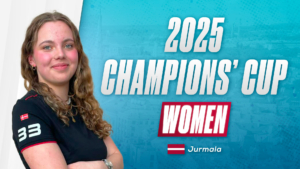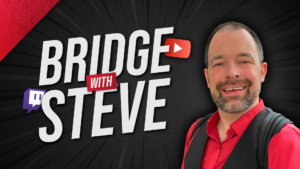
Bridge sponsors under the microscope

Whether they are patrons or partners, brands, sponsors or institutions, all contribute in different ways to the notoriety and modernity of the game, to the point that they have become essential today. Describing a passion both French and global, whose challenges are not limited to big money stories.
With all due respect,
sponsors do not date from yesterday but from the 14th century, when the Renaissance bridged the gap between the Middle Ages and what is commonly called modern history. A golden age, especially for artists. The great painters of the time relied a lot on patrons, starting with Michelangelo – who, like his contemporary Raphael, received the support of Pope Julius II (described in a memorable way in the film The Agony and the Ecstasy) – and Leonard de Vinci, whose protectors were the Medici family, Cesare Borgia, Ludovic Sforza and the French King, Francis I.
Modern bridge and its artists on the map also receive financial support at many levels. A distinction should be made between individual and corporate sponsorship. The first is sponsorship. The patron expects nothing in return for his endowment, except esteem and consideration. The second awaits a return on investment, in terms of image or financial, it specifically targets the desire embodied by the individuals and the values that they convey.

Patronage
Among the famous patrons, let us quote Madame Simone Del Duca, whose husband Cino Del Duca, press magnate on both sides of the Alps and worshiper of bridge, gave his name to a cup that used to take place reviously
at the Castello Sforza in Milan and at the Palais de Chaillot in Paris. Up to 1,200 players took part in this competition, where the Italian benefactor did not hesitate to invite everyone for a special evening at the opera.
Bolivian art collector Jaime Ortiz-Patiño also did a lot for world bridge before, during and after his presidency of the World Bridge Federation. As for the Taiwanese Chen Yeh, who organizes the Yeh Bros Cup, he generously endows it without trying to promote his own business. The same is true of Michael Bambang Hartono, to whom we owe the integration of bridge at the 2018 Asian Olympic Games in Indonesia. One cannot be a patron of bridge without having a passion for the game.

© Youth Worldbridge
For many years, the invitation tournament in The Hague was chaired by Henk van Dalen, who happened to be an experienced player. The ncredible contribution of Maria Teresa Lavazza (everyone misses her coffee!) is partly explained by the fact that she is herself a real and talented player. By creating the first team of professionals, the Dallas Aces, the American businessman Ira Corn, took patronage to patriotism. His goal was to build a team capable of ending the supremacy of the Italian Blue Team. Which he did!
La suite est réservée aux abonnés Funbridge Premium+
To read this article about bridge sponsors, please log in with a Funbridge Premium+ account.



